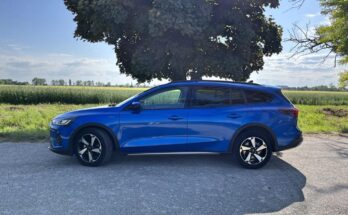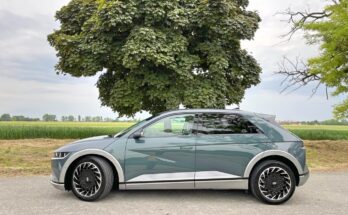To our great satisfaction, the fifth-generation Toyota Supra has currently undergone a weekly editorial test. The wait for the car, due to its considerable load, was quite lengthy, but it was definitely worth it. I rate the week spent with the new generation of this iconic car as one of the best this year.
The current fifth generation was presented to the automotive world last year at the Detroit Auto Show, as a result of a collaboration between Toyota and BMW. While BMW came up with the new Z4, Toyota used this mutual cooperation for the new generation of the legendary Supra.
Thanks to the chosen approach, Toyota also received a certain dose of "hat", but I see it as precisely thanks to this cooperation, such a great vehicle as the current generation Supra could be created.

An exterior you can't help but fall in love with
I had quite a lot of "peeks" of the new generation Supra from the web, and I also glimpsed it briefly on Legends in the past. But when you bring it home and start to examine the individual shapes and proportions in detail, you will find out how great a car it is in terms of exterior design.
Let's start with the side profile, it has a long bow, which is followed by a relatively modest cockpit, immediately behind which are the rear wheels and a short overhang of the rear part of the body. Another interesting feature of this part is the massive shaping of the lower part of the car, the sill, which gradually passes through the side doors to the rear fender of the car, giving it very original and massive shapes.
The front part is equipped with originally shaped front lamps, which have a long line of daytime running lights in their lower part and give the car a very characteristic lighting signature. The front bumper is then dynamically "cut through" by massive intake holes. Intake openings have unfortunately become quite a hot topic for the new Supra, because not everyone has their own functional justification. But believe me, that will be the last thing on your mind when you open the garage in the morning and she will be there :-).
The front view is highlighted by the interestingly shaped roof, which is significantly raised above the head of the driver and passenger. Also very elegant is the low front window, which gradually transitions into the side glazing, which slopes significantly and copies the profile of the roof itself.
The rear part is a design pearl and an imaginary successful ending of the whole car. Here, the Supra is equipped with an integrated "ducktail", horizontally oriented lamps that emerge from an imaginary cut in the body, or a pair of distinctive exhaust tips.
The Toyota Supra of the fifth generation has done incredibly well in terms of exterior design. Its basic shapes are quite massive and even slightly corpulent, the individual details and shaping of the body give the car an incredible flair.

The interior, at a glance the most obvious cooperation with BMW
To Supra, like a cannon. Getting into the car itself is not entirely comfortable, but quite adequate for a two-seater sports coupe.
The dashboard itself is a Toyota creation, it will offer a strictly horizontal layout, which is supported by a distinctive line with integrated air conditioning vents. The dashboard gives a very calm and settled impression, following the example of the entire interior, which I rate only positively.
The Supra's digital instrument panel is dominated by a large tachometer, from which a smaller on-board computer display emerges. A discreet digital speedometer is located in the left part.
The central part of the dashboard most evokes BMW cars. The Supra here works with an older version of infotainment from BMW. This is evident in the very environment of the infotainment display, or in the control elements of the center panel, which is equipped with the well-known BWM iDRIVE rotary controller. The same applies to the ZF eight-speed automatic selector. So this party was fully guided by the motto that what works, there is no need to change.
The internal ergonomics of the Supra work excellently and thanks to its internal "space saving" everything is within easy reach. I must also praise the seats, which offer good lateral guidance. A pair of JBL speakers and a small fire extinguisher are placed between the front seats and the luggage compartment.
The luggage compartment has a volume of 290 l and, thanks to the large hinged lid, it is relatively easily accessible within its entire floor plan.
The only dark side of the entire interior for me was its certain creaking, but I attribute this more to the specifically tested car, which had already had quite a lot of mileage and every week a new driver who found out how great a car the new Supra actually is.

Supercharged three-liter inline six-cylinder engine and eight-speed ZF automatic transmission
The announced cooperation with BMW also found its way into the Supra's power unit. It is currently powered by a "Bavarian" turbocharged inline six-cylinder with an output of 250 kW, i.e. 340 horses. Its torque then reaches a value of 500 Nm, which is available from 1600 rpm. The supercharging itself is then ensured by a Twin-Scroll turbocharger.
The Supra's powerful engine is paired with an excellent ZF eight-speed automatic transmission, and I have no words to describe its performance. It works great, it's well graded, fast, and the qual changes are very smooth in normal mode. In SPORT mode, the transmission "thickens up" pleasantly, mainly during downshifting itself, when it will clearly let you know through the engine that it is downshifted. Excellent work.
The cooperation of a powerful engine and an excellent automatic transmission will shoot the Supra with the launch control system to 100 km/h in 4.3 seconds. The maximum speed is then limited to 250 km/h.

Driving impressions
D-day is here, so I'm off to pick up the new Supra. After a classically pleasant handover process, I enter the interior of the new Supra for the first time. Starting the engine is of course automatically accompanied by the classic "bark" of the engine, just to let you know who you have the honor with.
My first kilometers are quite careful and getting to know each other, and it's fresh after the rain. After a few kilometers, however, I gain confidence and fully rely on the work of the excellently functioning stabilization system.
The new Supra works in two modes, NORMAL and SPORT. A pleasant surprise is finding out how pliable and daily usable it is in "normal" mode. It's not even very hungry and gets by with 8 liters per 100 km.
In sport mode, the Supra thickens considerably, the most noticeable change occurs in the functioning of the gearbox, which revs the engine much more and can kick the engine considerably when downshifting. A change also occurs in the exhaust, which is a bit noisier, and the Supra also "paints" you with the sound from the JBL speakers. Consumption in sports mode is then directly proportional to your driving style. On average, however, expect 13 liters per 100 km.
The real fun comes when the stabilization system is deactivated. After pressing the button, the stabilization switches to a kind of "intermediate state", a long hold then turns off the stabilization completely. The Supra then becomes an incredibly fun and playful car, which, thanks to its short wheelbase, wide track and electronically controlled rear differential, has the best prerequisites for this.

In conclusion
After a week's test, I can safely say that the fifth-generation Toyota Supra is a great and great car that can be very fast, tremendously fun and, moreover, also usable on a daily basis. All this is then presented to the user in an incredibly stylish package.
And how much will you buy the new generation of the legendary Supra? With the tested six-cylinder under the hood and in the only offered Executive equipment, it costs CZK 1,800,000 including VAT. However, if you were missing some of the little things, the Supra is also available with a two-liter turbocharged engine, starting at CZK 1,250,000 including VAT.
Source: Author's text
Image source: Author's own photos
























